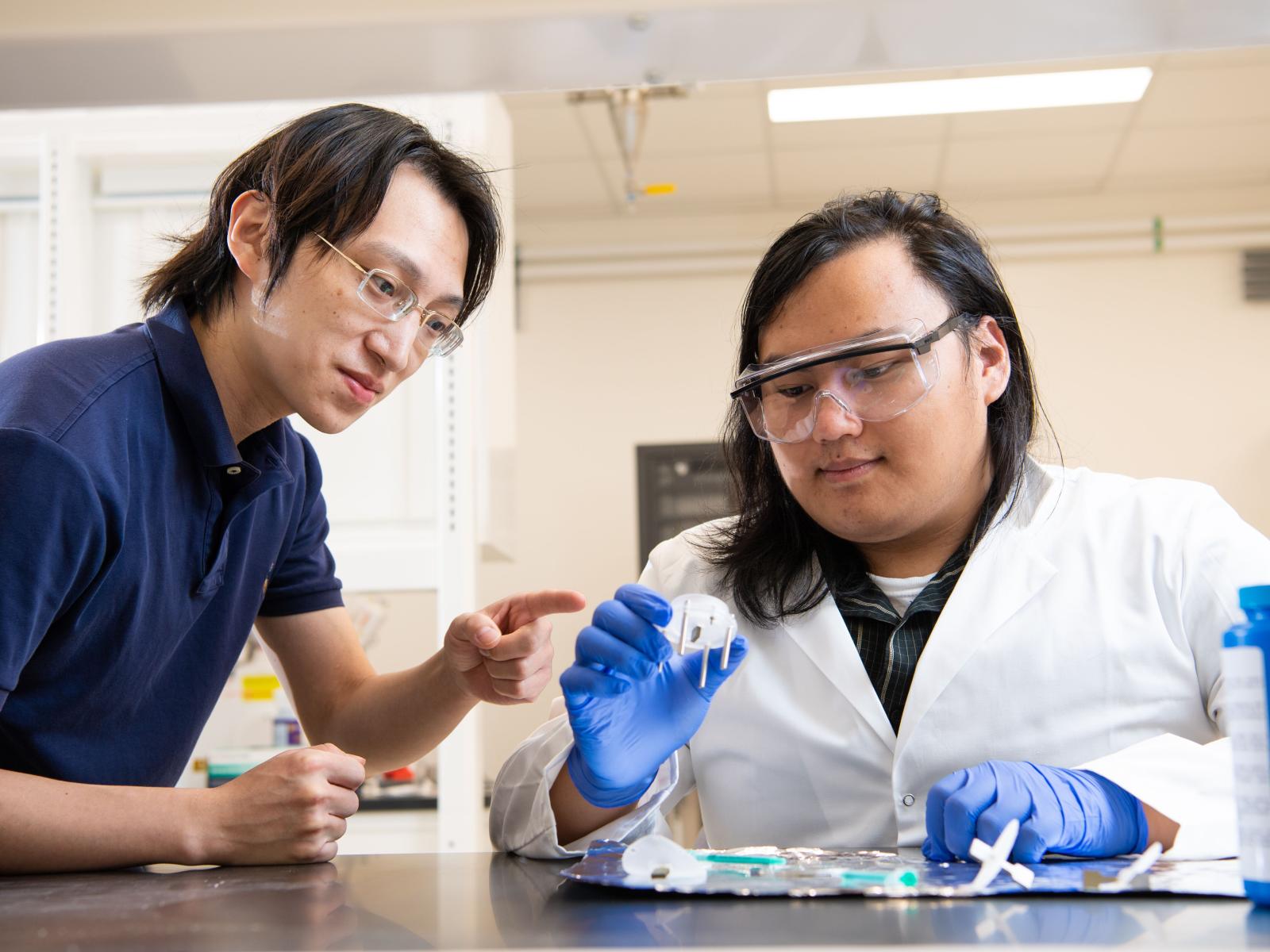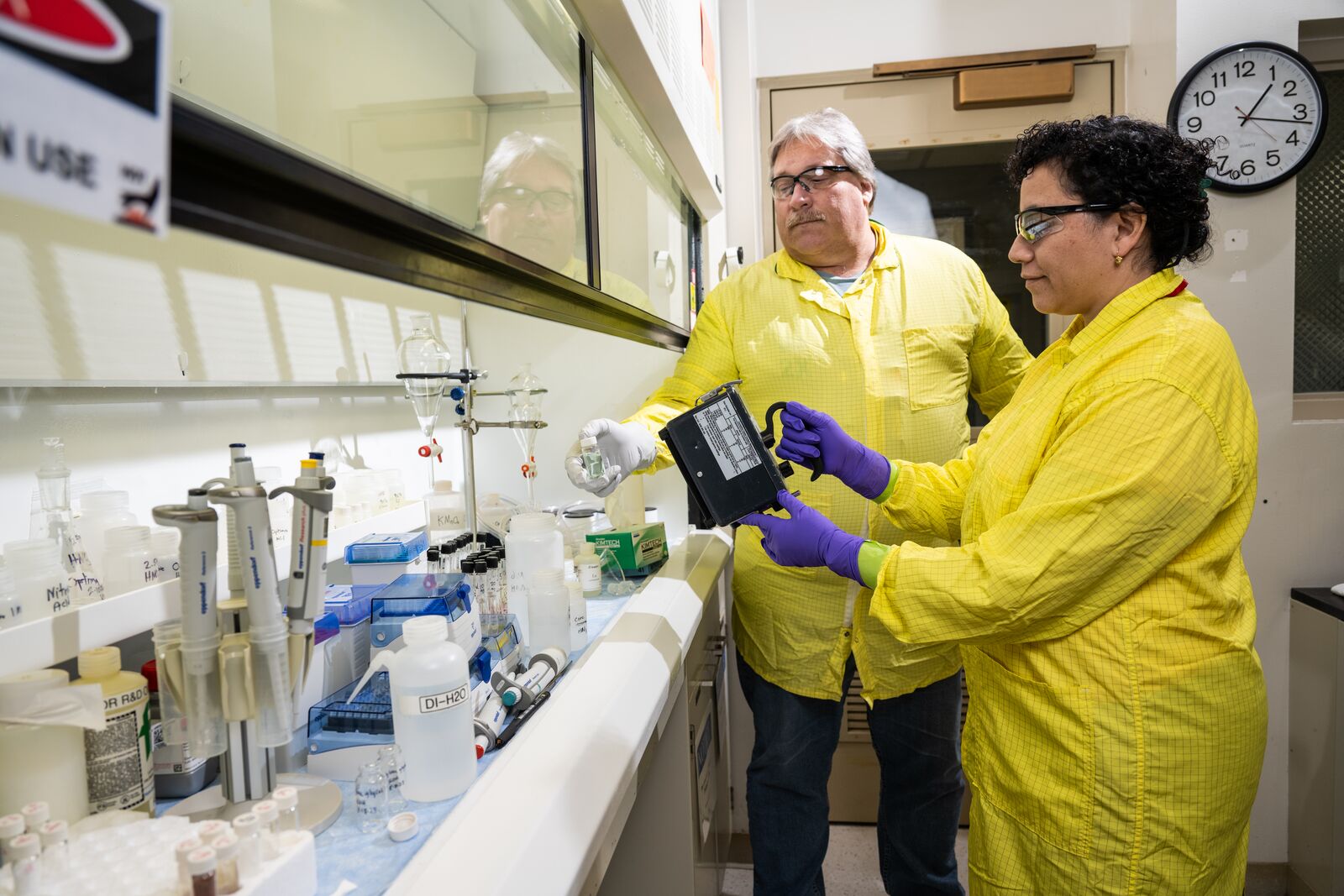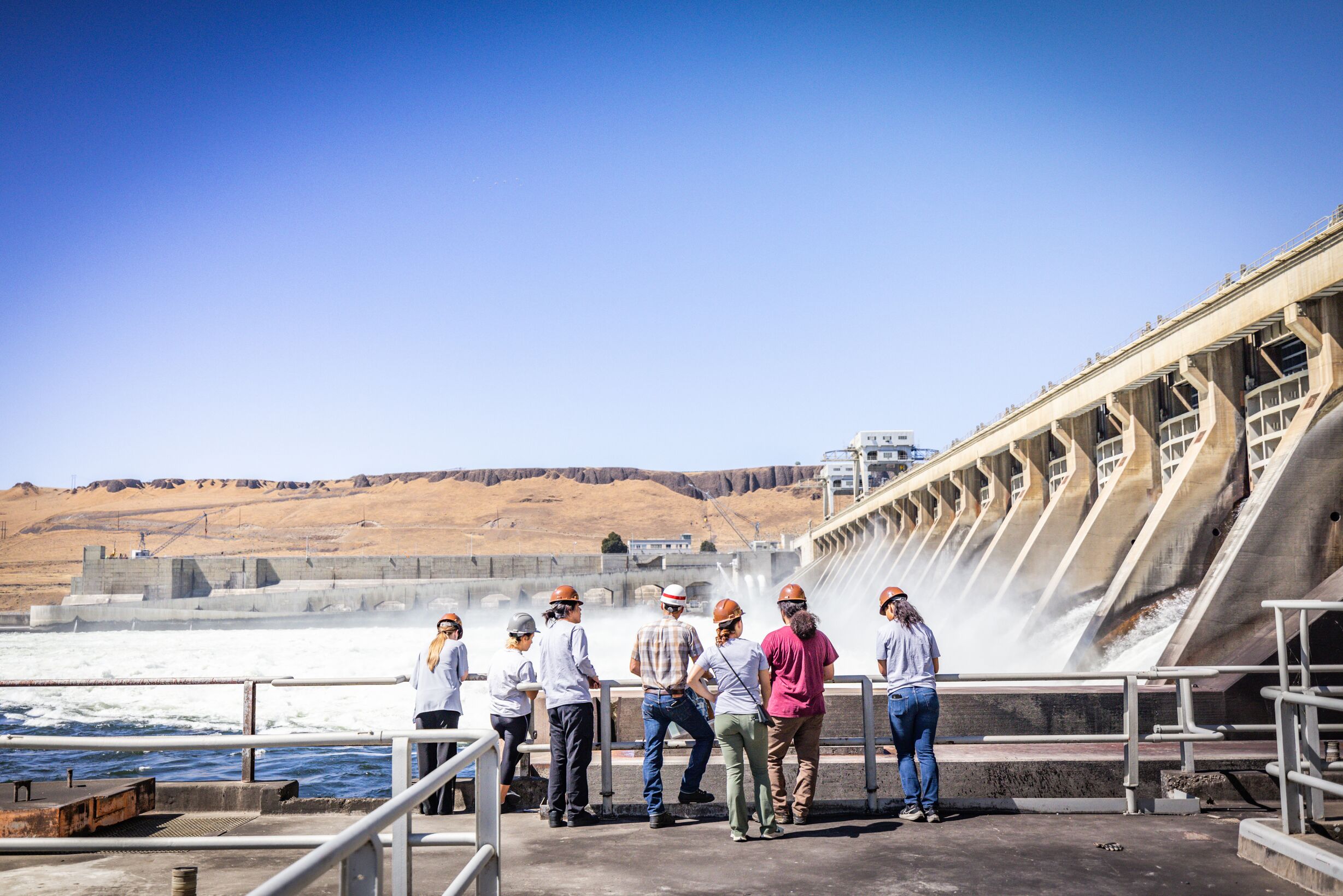Eastern WA National Lab Interns Contribute to Energy, Security, Scientific Discovery

PNNL intern Andrew Tong, right, shown here with one of his mentors, Tingkun Liu, is supporting the study of hydrogen embrittlement in stainless steel for an Office of Science-funded Early Career Research Program. His research could help improve materials used to store and transport this carbon-free fuel in the future.
(Photo by Andrea Starr | Pacific Northwest National Laboratory)
As summer comes to a close, students across the nation are enjoying their last days of sun and fun before school starts.
But for nearly 1,600 interns and research associates at the Department of Energy’s Pacific Northwest National Laboratory, the end of summer means a scramble to wrap up their various research projects.
Andrew Tong is one of these bright and enterprising students who spent their summer “vacations” at PNNL contributing to our efforts to advance scientific discovery, enable sustainable energy, and enhance national security.
A senior at the University of Washington majoring in materials science, Andrew worked on a new way to test how hydrogen affects metals.
One of his projects focused on understanding how metals become more brittle after exposure to hydrogen. His research could help improve materials used to store and transport this carbon-free fuel in the future.
Andrew developed a device that makes it possible to embed materials with hydrogen while conducting tests aimed at pulling the material apart to measure its strength.
Typically, this is a two-step process, with hydrogen escaping from the materials before the tests can be initiated. Beginning last summer, Andrew started with a problem statement from his mentor and has since developed the concept, designed the device and built a prototype that worked flawlessly on the first try.
As a child, Andrew remembers a classroom experiment that involved connecting a light bulb to a D-cell battery and realizing how mysterious and exciting the world can be.
By bringing that enthusiasm and curiosity to his internship, he is helping develop testing methods that may better reflect what happens in the real world, for example when hydrogen is stored in stainless-steel tanks.
Another intern, Mayra Injerd, recently graduated from Columbia Basin College’s Nuclear Technology of Applied Science program and is working alongside radiation protection technicians in PNNL’s Radiochemical Processing Laboratory.

Her internship provides hands-on training and an opportunity to support the people who are responsible for keeping radiation workers safe while doing research related to nuclear nonproliferation, medical isotopes and nuclear waste cleanup.
On a typical day, Mayra may be involved in radiological surveys, checking instruments to make sure that they are not contaminated and can be safely used or relocated. She also makes sure that the workers are following the procedures needed to protect them from exposure to radiation, which may include wearing gloves, lab coats and dosimeters.
Mayra says that being in school was one world, but PNNL is where the magic happens. She may ultimately continue her education to pursue a degree in health physics or management.
Cosmo Jack, a student at Yakima Valley College, spent his summer participating in a STEM challenge focused on understanding the importance of renewable energy in Washington state.

He and two fellow interns from Peninsula College explored the impact of wind energy and hydropower in the Tri-Cities area.
During his time on our campus in Sequim, Wash., Cosmo studied data about how strong the wind blew and where. His team learned from PNNL researchers about how hydropower and other renewable energy could help power a city or community.
They also considered the impacts on the environment and the people it supported and affected. For example, they learned about the importance of understanding the culture, history and laws of Native American tribes in planning potential renewable energy projects.

Cosmo says his experience, which included visits to McNary Dam, the Wildhorse Wind and Solar Farm, and the Wanapum Heritage Center, helped drive home the need for more cost-effective, carbon-free energy sources, including marine energy.
Andrew, Mayra and Cosmo—and other high school, undergraduate and graduate students—gain knowledge and experience working alongside researchers while supporting PNNL’s science and technology outcomes.
The scientists and researchers guiding these interns’ projects are also encouraging and nurturing the next generation of talent who will help shape a brighter future for us all.
Steven Ashby, director of Pacific Northwest National Laboratory, writes this column monthly. To read previous Director's Columns, please visit our Director's Column Archive.
Published: August 28, 2023